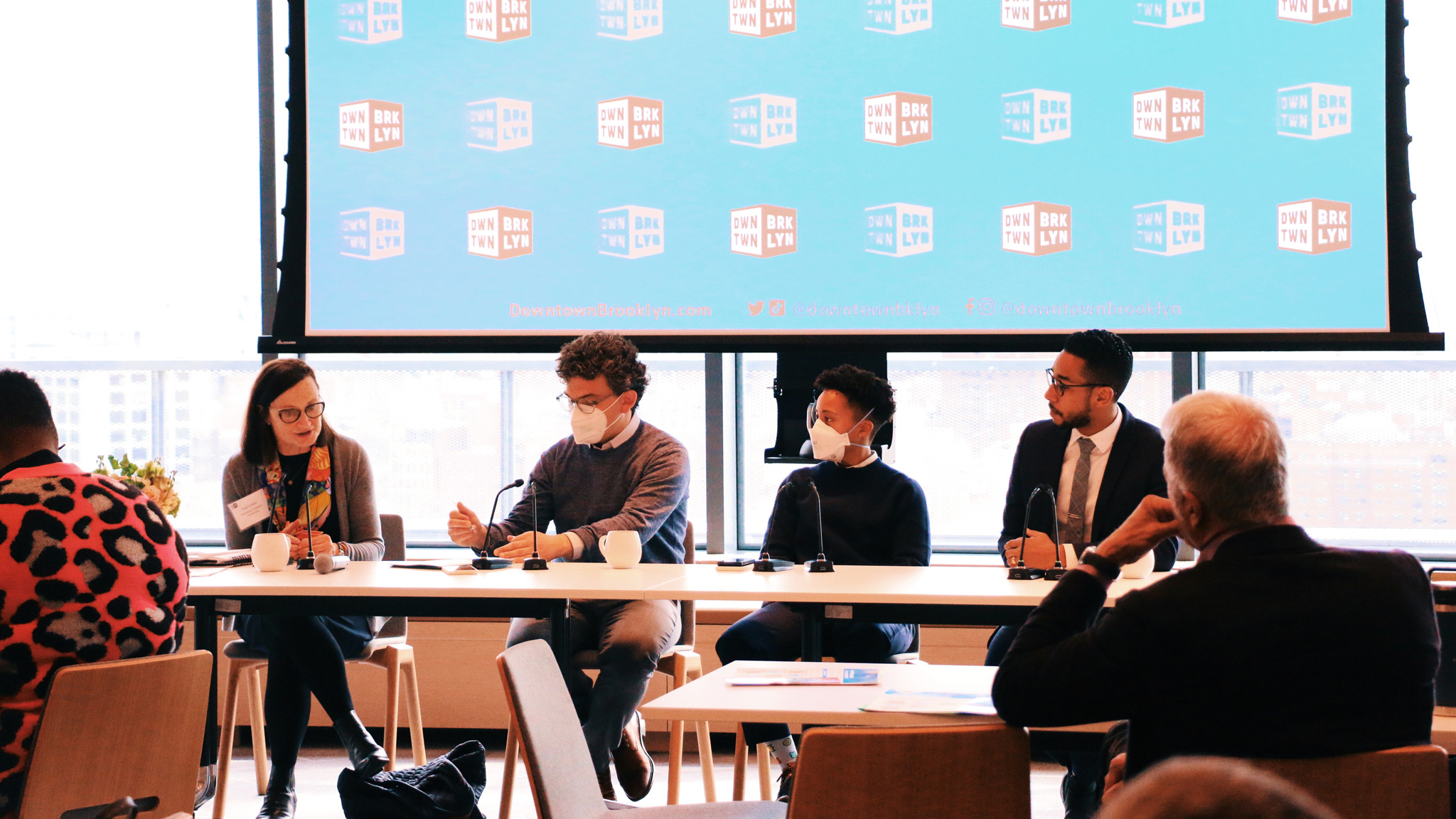With the pandemic lockdown over and in-person events again possible, DBP was able to host its annual Legislative Breakfast, this time highlighting the neighborhood’s newly elected representatives at City level. Held at the spectacular Dock 72 in the Brooklyn Navy Yard, the morning kicked off with networking among DBP members and guests, followed by a panel discussion moderated by DBP President Regina Myer. The event provided a great opportunity for Brooklyn Borough President Antonio Reynoso, Council Member Crystal Hudson, and Council Member Lincoln Restler to have an open conversation about their policy initiatives and priorities, and their potential impacts on the future of Downtown Brooklyn and NYC.
Many topics were discussed, with the housing crisis chief among them. In opening comments, the Brooklyn Borough President focused on how zoning can be wielded as a tool to alleviate the problem: “Market rate development is part of the solution – and that’s ok – but it can’t be done in just a few neighborhoods. It must be all of Brooklyn. The capital infrastructure plan needs to be decoupled from zoning. We shouldn’t be leveraging managing basic infrastructure needs against communities because we want development. We need to start building out resilient infrastructure.”
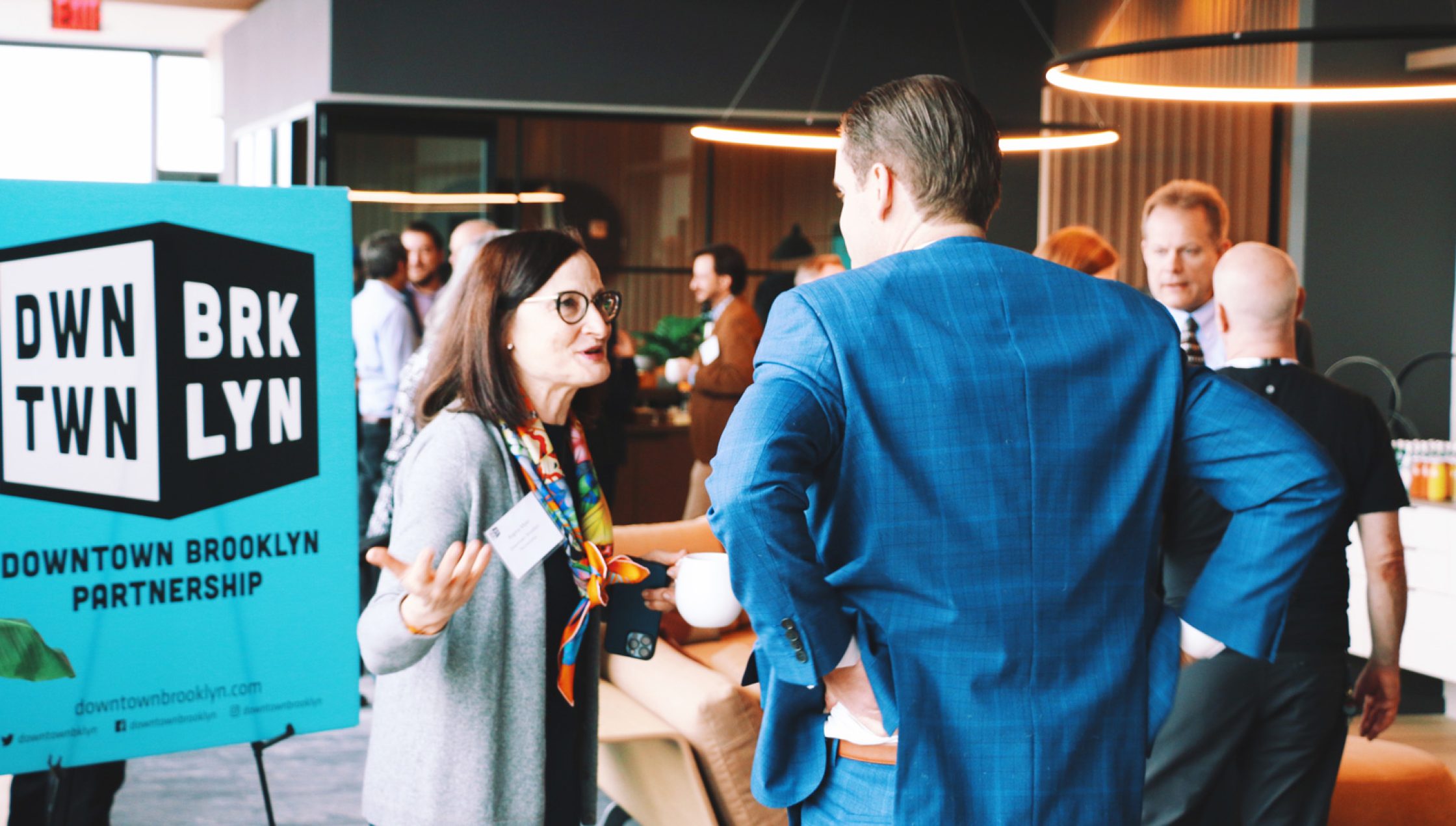
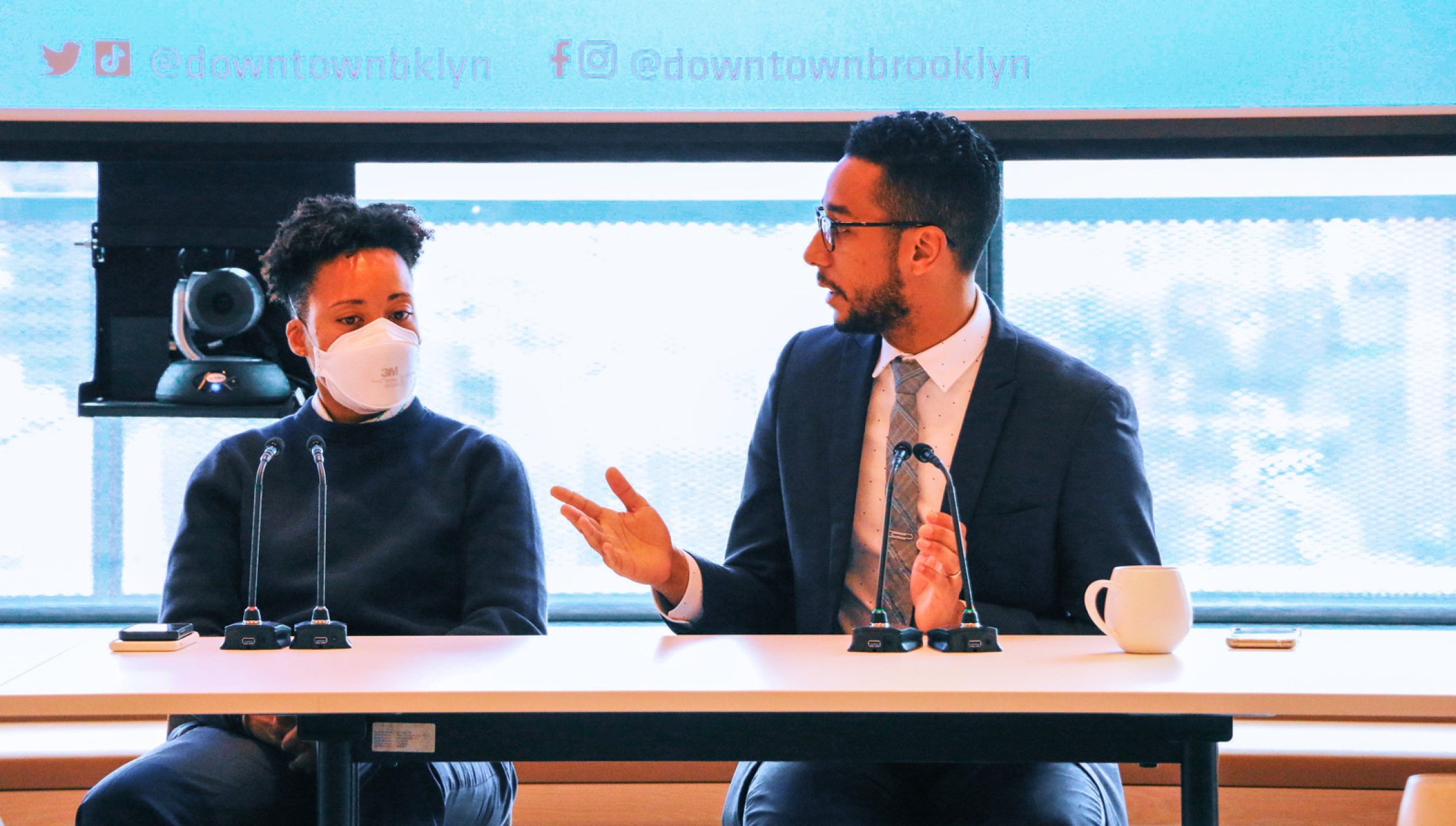
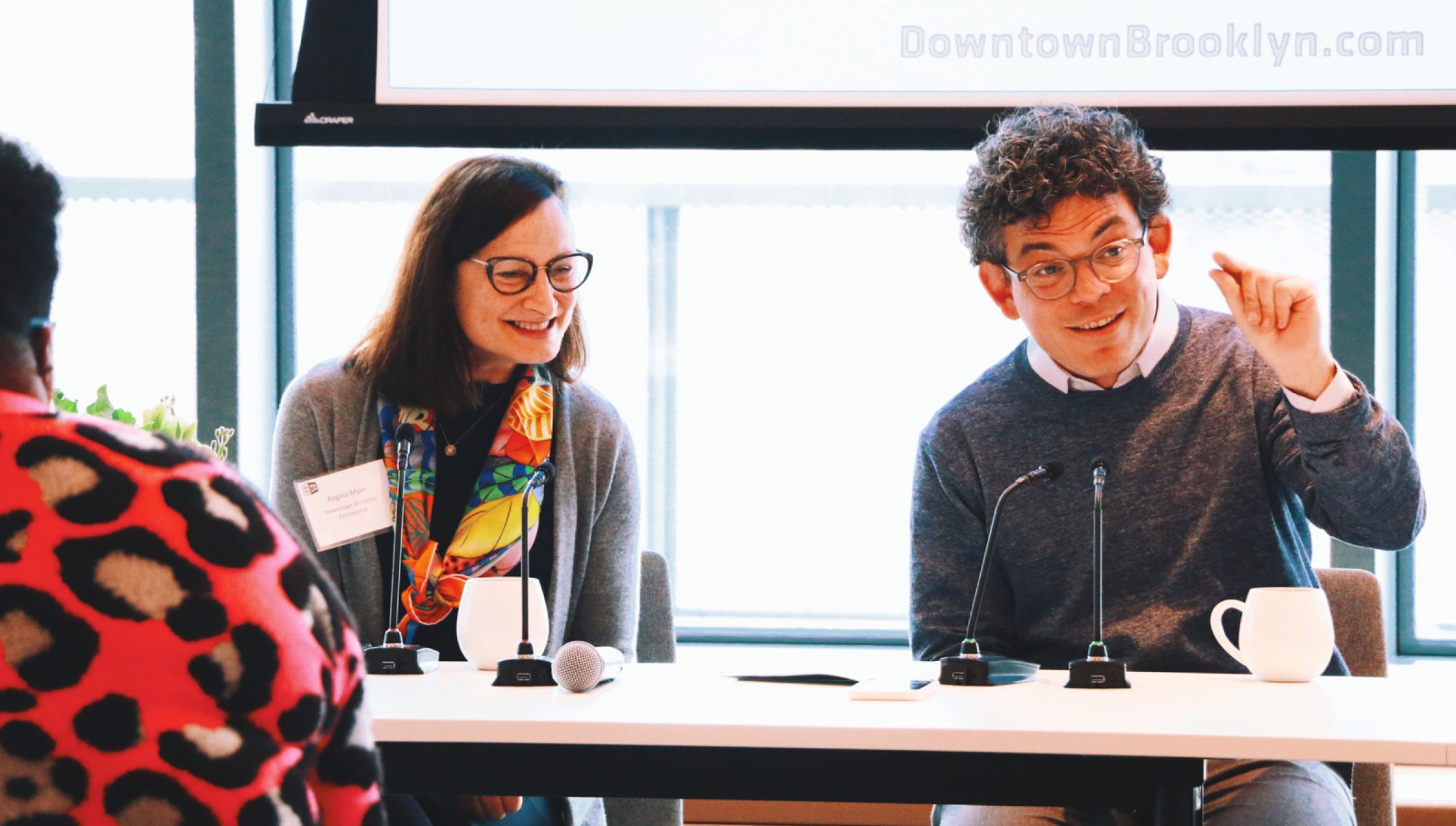
NYC Councilmember Lincoln Restler (D33) represents a district that stretches from Boerum Hill and Downtown Brooklyn to Williamsburg and Greenpoint – neighborhoods that have seen remarkable change over the past decade. “What I hope is that when new businesses come to our district we can prioritize the hiring of our local residents, and especially our public housing residents who have not benefited from all this growth. We’re seeing a lot of residential development and it’s time to start creating a sense of community. It’s time to build a civic association so we can look out for the needs of the residents. We’ve added 50,000 people in the 33rd District in the past 10 years – the most of any district in New York. As we look forward, we want every neighborhood to be a part of the growth. We want to prioritize affordable housing initiatives.”
Crystal Hudson, NYC Councilmember for District 35, painted the picture from her perspective as a lifelong resident of Fort Greene: “I’m young, I’m black, I’m gay, and I’m very progressive. We know we need to build – we know we have a housing crisis. When I talk about development, we have to do it differently than we’ve done before. My district has lost 10% of its black population in the last 10 years. It’s incumbent upon me to make sure that black people are centered in everything that we do.”
Marking the timing of the event, Regina Myer posed the question: “What have each of you done in your first 100 days?” Responses were as follows:
CM Hudson: “We have a very highly engaged district. Constituent services is always the number one thing. For the first 30+ days, we focused on refining our programs and services. The pandemic eviction moratorium expired without consideration for how it would impact everyday New Yorkers. Then we started focusing more on policy and legislation. We are all thinking about how to make New York City the premiere city to age in. This should be a city where everybody feels comfortable getting older – how are we making it easier for folks to grow older here? I also don’t think it’s responsible to put up building after building without consideration for the neighborhood. Let’s develop the whole Atlantic Avenue corridor, but let’s do it responsibly in ways that engage the community. When residents see new buildings, they might ask “Who put them here? What’s coming for me?” And the answer is usually “nothing.”
BP Reynoso: “I want to be the Borough President who talks to the local Councilmembers! I’m the chief promotor of Brooklyn. I’m here to push a positive energy.”
CM Restler: “My role has been simple: to help every person know that we’re the place to call for help. It is a moment of transition for city government as a whole. It is a new moment in New York City, and transitions take time. How do we think about making our neighborhoods truly safe places to be? Making sure we’re actually investing in our communities is first and foremost. We’re also trying to reduce non-essential helicopters and crack down on placard abuse.”
The electeds then fielded questions from attendees:
Q: How will you prioritize transit infrastructure?
BP Reynoso: “All roads lead to Downtown Brooklyn. The bus routes are a disaster and should be much more streamlined and efficient. I’ve mentioned my priorities on pedestrian infrastructure and actual protected bike lines. We need to better invest in our transit infrastructure – for the subways, that means partnerships with station managers to improve the cleanliness and safety of our stations. Push the MTA to invest in the quality of our infrastructure. Work to expand ADA accessibility in each of our stations. Our subways and our arts are the two things that make NYC spectacular.”
Q: How do we delink zoning with development?
BP Reynoso: “Separate the politics. It is the responsibility of the city to meet infrastructural needs. Attaching the capital budget to development is not sustainable for a city that is being affected by climate change. If it’s in the comprehensive plan, you should do it. It also takes away from the idea that rich neighborhoods should do all the work – affordable housing needs should be met by all of Brooklyn.”
Q: The bulk of development is occurring with private capital. What are some concrete changes to zoning that could connect private investors vs. the people who feel impacted by it?
CM Hudson: “The ULURP process is designed to keep select people in the room, and to keep many people out. There are a lot of people who want development and want their needs met, and it is incumbent on us to figure out how to make that happen. I avoid talking about zoning. People are not part of the process and they’ve been left out of the process deliberately. We need to come with a clean slate and ask community members what they want. Change the process. What I’m talking about is engaging community in a way they’ve literally never been engaged with before. Community Boards are not representative – they are made of highly engaged residents who have the leisure time to volunteer every day. More people would like to be engaged but can’t because they’re trying to put food on the table for their kids. The process is flawed.”
BP Reynoso: “The ULURP process does not care about Community Boards. If we resourced the Community Board process, this would be a different conversation.”
CM Restler: “For the developers out there, if you want to pursue ULURP, engage us early prior to certification. I’m not here to fight you every step of the way. I’m here to work collaboratively.”
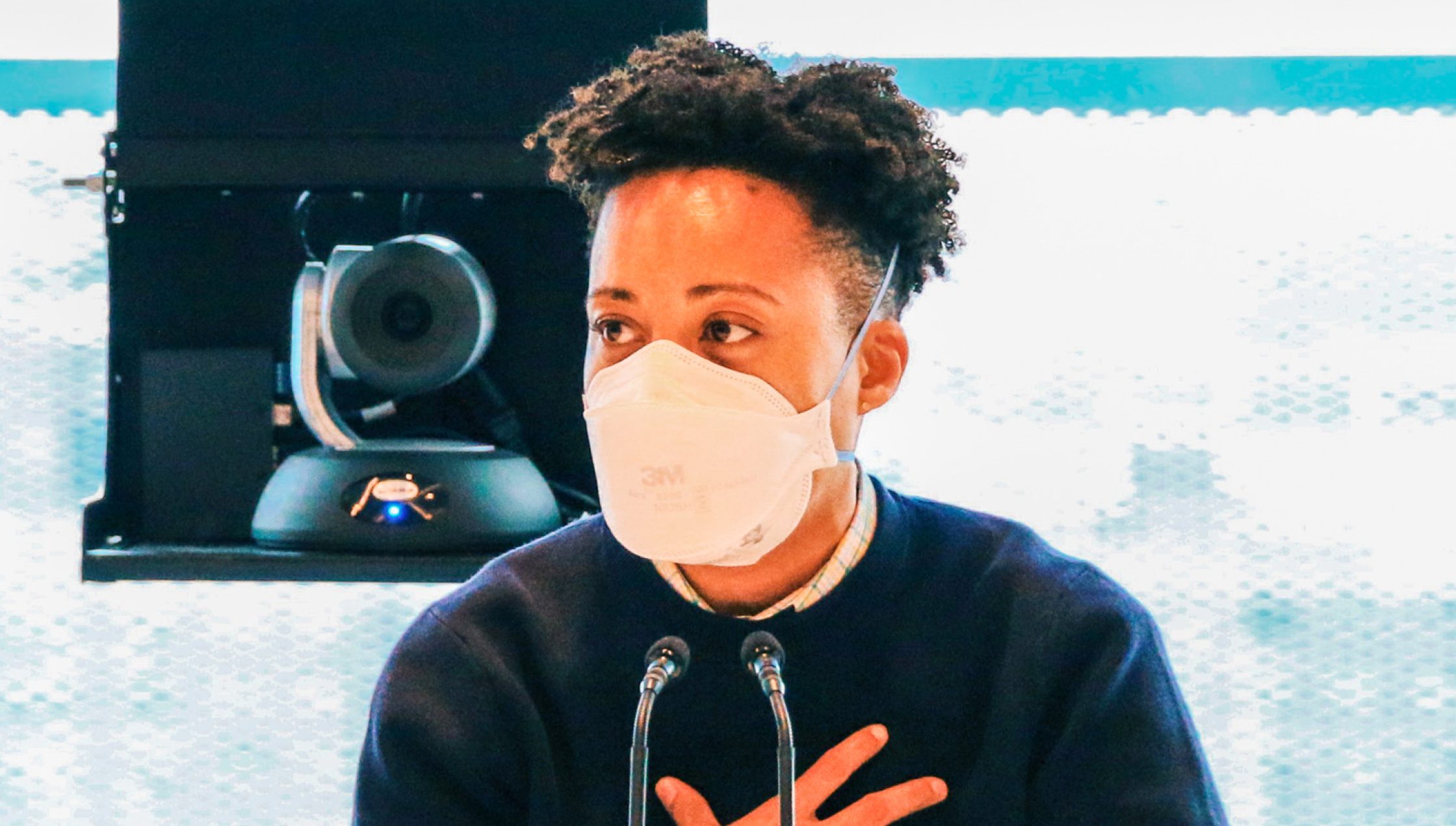
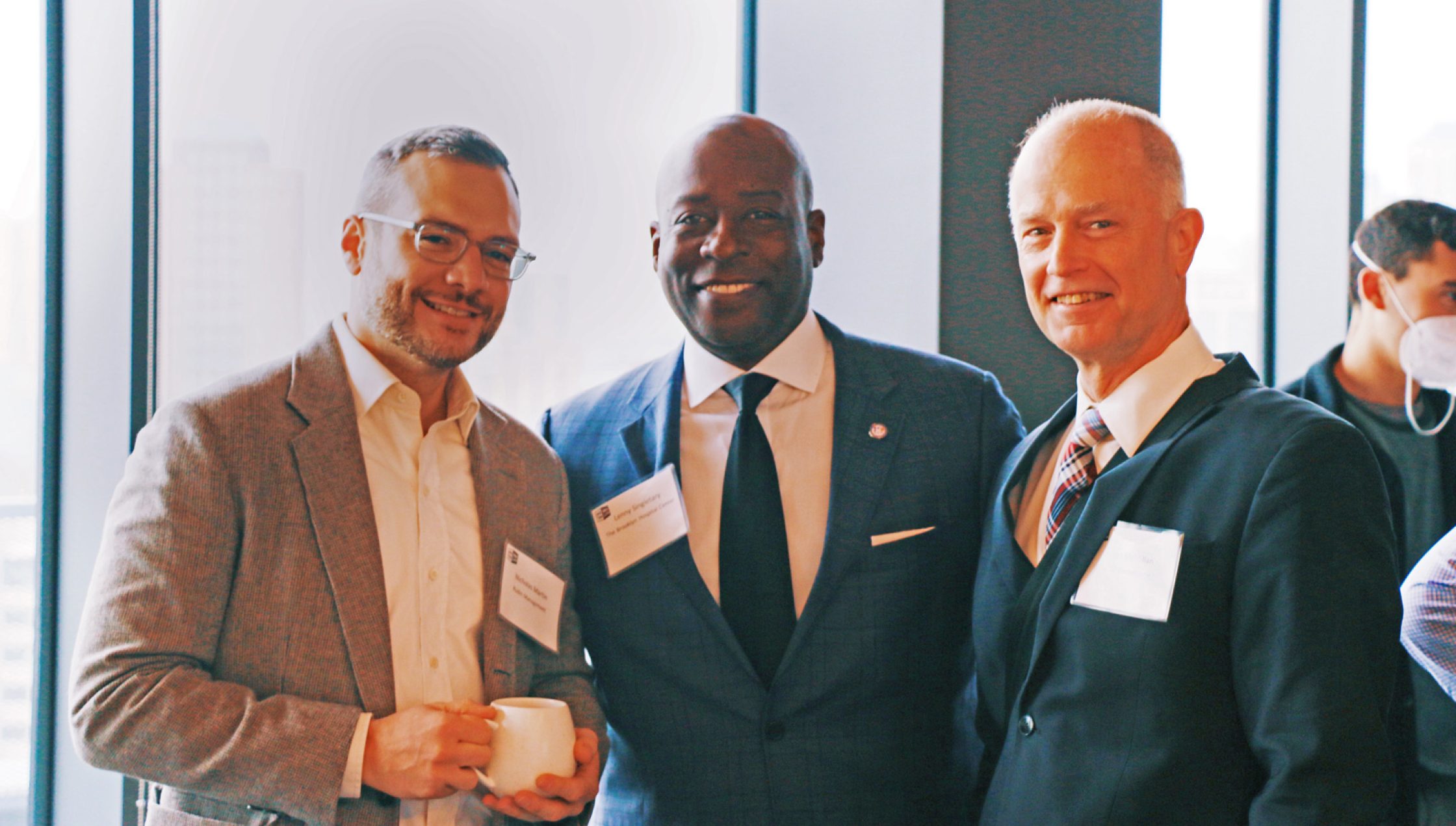
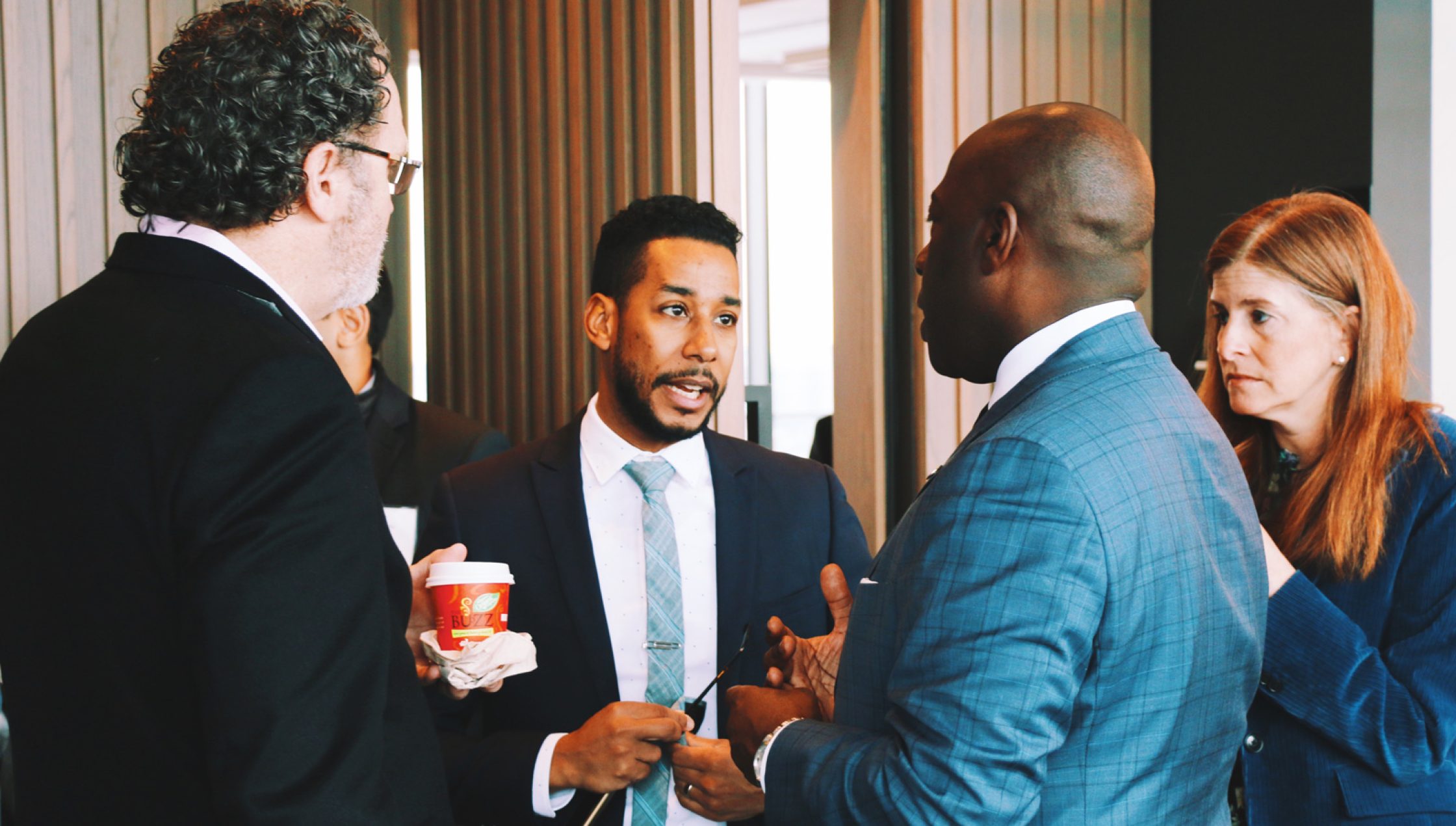
Comment: The strength of Downtown Brooklyn became clear when the NY Times showed that Downtown Brooklyn weathered COVID better than the rest of the city – in large part because it is a mixed-use neighborhood. When we think of comprehensive planning, I want to point out how mixed use is a strength.
CM Restler: “Who doesn’t want to live, work, play in Downtown Brooklyn? We’ve got it all. But we’ve got work to do to make it all come together.”
BP Reynoso: “We’re still missing public housing. NYCHA is still the most successful affordable housing project in the nation, and we don’t do it anymore. We’ve been conditioned to think public-private partnership is the only way to do housing in the city and that’s just not true. I think there’s a way to go back to not-for-profit developers.”
Q: How do we incentivize developers to build affordable housing?
BP Reynoso: “Mandatory Inclusionary Housing is an amazing tool that has allowed us to get a bottom line and I think that’s a good thing. I don’t think we could do this through partnership. We don’t get to see the numbers, so I have no idea what profits you’re making on these projects.”
CM Hudson: “NYC is the greatest city in the world. Why can’t we ask developers to do a little bit of good? I don’t see why we can’t innovate here. Why can’t we lead?”
Wrapping up what had been a most enjoyable and informative morning, Regina had the last word: “Everyone in this room works every day to make Downtown Brooklyn the best it can be!”
